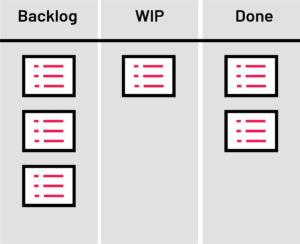State of Kanban Report (2021) – 7 Key Takeaways You Need to Know
For unknown reasons, many people consider Kanban a “second citizen,” sitting behind the Scrum framework within many organizations. Interestingly, Kanban is 50 years older than Scrum. Developed as part of the Toyota Production System in the 1950s, it eventually served as the foundation for the modern practice of Lean Manufacturing. In 2021, Kanban University published the very first State of Kanban Report. The report highlights a few industry trends regarding the use of Kanban methods around the world.
I would like to share a few key findings that might be important to be aware of.
1. Challenges adopting Kanban are similar to Agile adoption

2. Organizations of All Sizes Are Using Kanban
This finding from the report may or may not be a big deal, but remains interesting nonetheless. Kanban is often seen as a technique for smaller organizations that can move more rapidly. This is somewhat ironic since one of the largest automotive manufacturers invented it.
3. Almost all industries use Kanban
The report shows that there were respondents from the following industries:
- 20% — software and internet services
- 18% — consulting and professional services
- 15% — financial services
- 15% — engineering
This infers that Kanban is a flexible tool and nearly all types of work can use it, including products and services. This also implies that all facets of companies consider Kanban, not just software.
4. Software and IT are the most popular functions currently utilizing Kanban
I personally find it interesting that of the companies using Kanban, only 5% are in the industrial and manufacturing sectors. The majority of companies using Kanban are in the software/IT sectors. I believe that this is the result of digitization in the world economy, which uses software more than manufacturing, which was a former leader during the era of the industrial revolution. In this modern era, companies cannot function without software technology, which explains the broad application of Kanban.
5. Most organizations are using an Intermediate Kanban board

6. Most organizations start with Scrum prior to adopting Kanban
Roughly 44% of respondents indicated that Scrum was the method of choice prior to adoption of Kanban. This makes sense since most organizations seem to default to Scrum as the Agile method of choice; my theory is that this is due to the added rigor and widely-marketed success stories from various organizations. Since Scrum and Kanban can and should complement each other, my personal preference is to start with one or the other with a long-term goal of integrating the two practices at some point in order to maximize the value of the Agile team.
7. Future of Kanban appears promising
According to the data collected from this study, roughly half (49%) of respondents plan to expand their Kanban implementation in the next 12 months. This is a great sign teams that desire results see Kanban as a useful and beneficial tool.
To wrap up this overview of the insightful State of Kanban report, my overall impression is that many companies are taking advantage of the simplicity and power of the Kanban approach to gain positive business results. This is a great sign for practitioners who have experience applying Kanban or helping others to adopt this method. If you have not had the opportunity to learn this tool yet, I highly recommend that you start very soon so that you are not caught unprepared!



